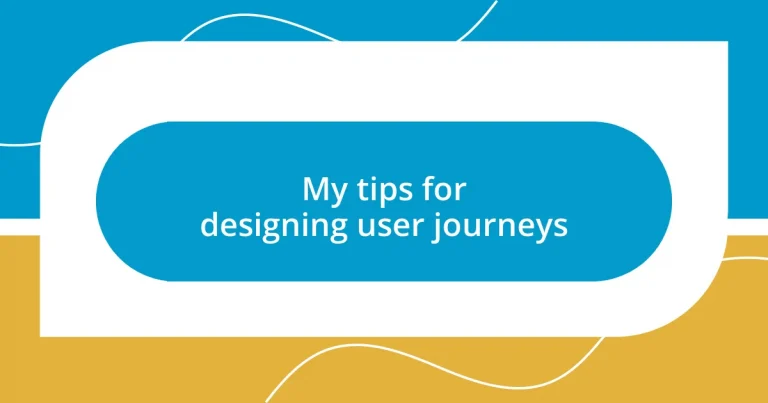Key takeaways:
- Understanding user needs through empathy and feedback is essential for effective design, as it uncovers pain points and real user desires.
- Defining clear goals that align business objectives with user needs enhances satisfaction and improves overall user experience.
- Regular testing, measuring success, and being open to iterative design changes based on user insights are crucial for optimizing user journeys.
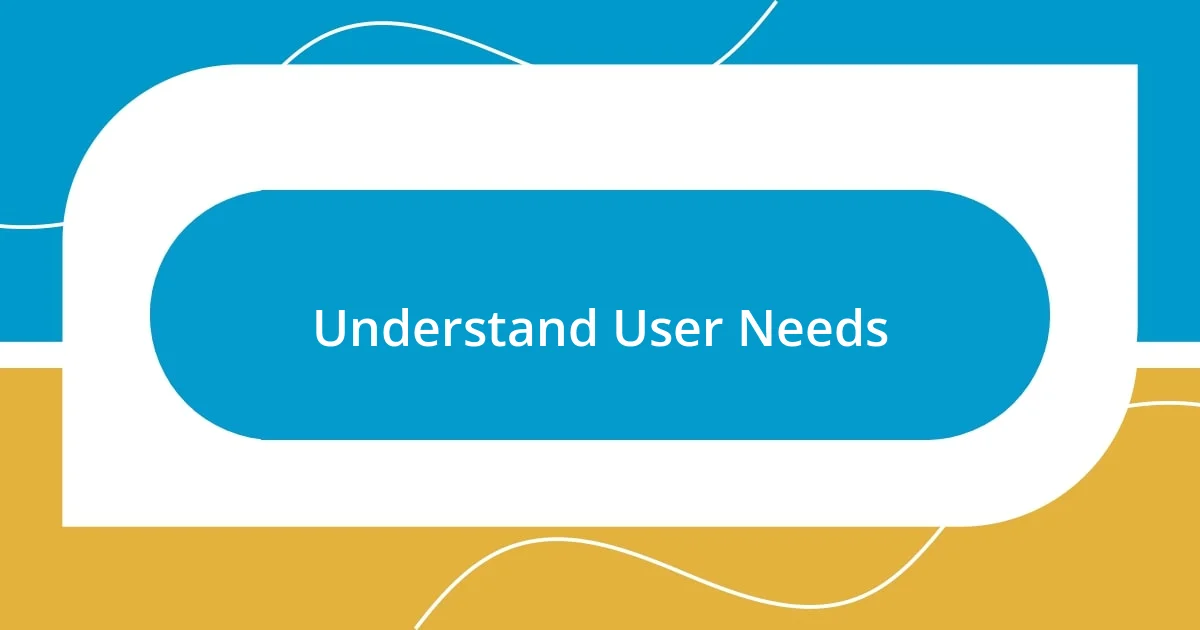
Understand User Needs
Understanding user needs is more than just a checkbox on your design to-do list; it’s the very foundation of effective design. I recall a project where we assumed a feature was essential based solely on our assumptions, only to discover through user interviews that it hardly met their needs. Have you ever poured your heart into a design only to find out it missed the mark? This is why genuinely listening to your users is crucial.
When you take the time to engage with your audience, their perspectives can illuminate pain points and desires you might have missed. I remember a time when I hosted a workshop where users expressed frustrations with navigation that seemed perfectly logical to us. The emotional relief on their faces when we brainstormed solutions together reminded me that empathy is key. It’s not about what we think they need; it’s about understanding their feelings and experiences.
Finding ways to connect deeply with users can transform your design process. For instance, I’ve started using empathy maps during planning sessions, which helps visualize feelings and thoughts in the user’s journey. Have you tried this technique? It’s remarkably powerful to see the data come alive through the lens of user emotions; this keeps the user’s essence at the forefront as we design.
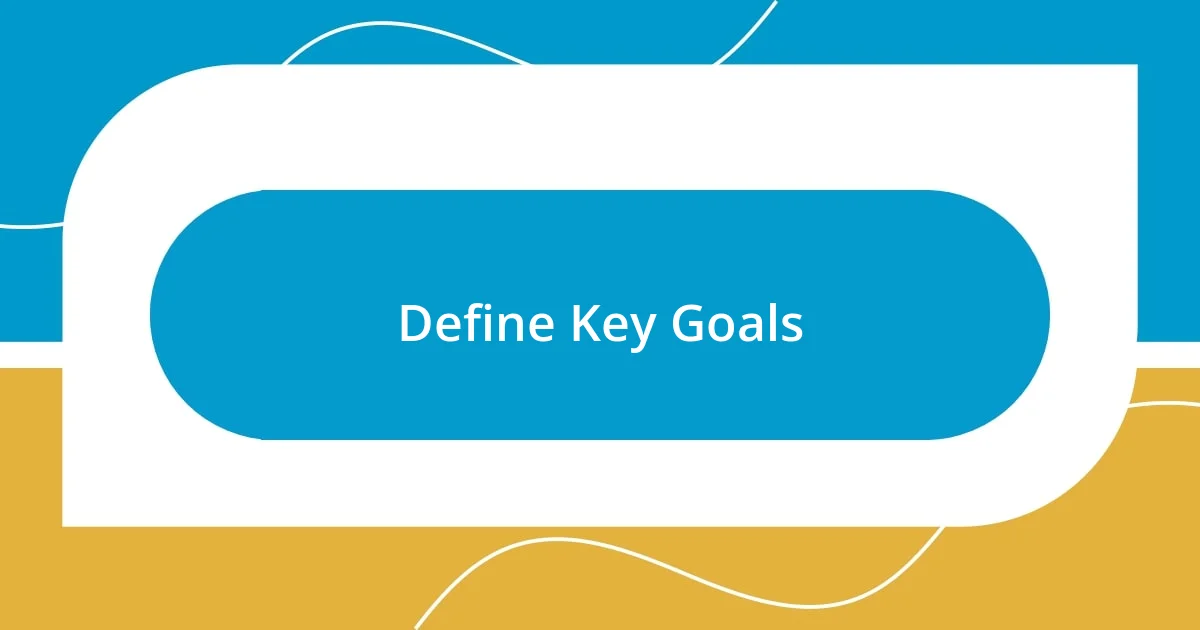
Define Key Goals
Defining key goals is essential in shaping user journeys effectively. I’ve often found that setting clear objectives helps in aligning the design team with the users’ needs. For example, in a past project, we identified that increasing user retention was a priority. Focusing on that goal led us to explore features that enhanced the user experience, ultimately improving our retention rates significantly.
It’s also important to differentiate between business goals and user goals. In one project, our team aimed to boost sales, but we realized that users primarily sought quick solutions to their problems. By reframing our objectives to align closely with user needs—like providing easy access to support—we created a win-win. This approach not only fulfilled the business goal but also elevated user satisfaction, proving that empathizing with users can lead to shared success.
Additionally, regular reviews of our goals during the design journey have become invaluable. Once, we started a project with a narrow focus on functionality but discovered through user feedback that emotional engagement was just as crucial. Revising our goals mid-way resulted in design choices that resonated with users on a deeper level. Have you ever had to pivot like that? It can be daunting but often turns out to be the most rewarding part of the process.
| Type of Goal | Example |
|---|---|
| Business Goal | Increase sales by 20% |
| User Goal | Access support quickly |
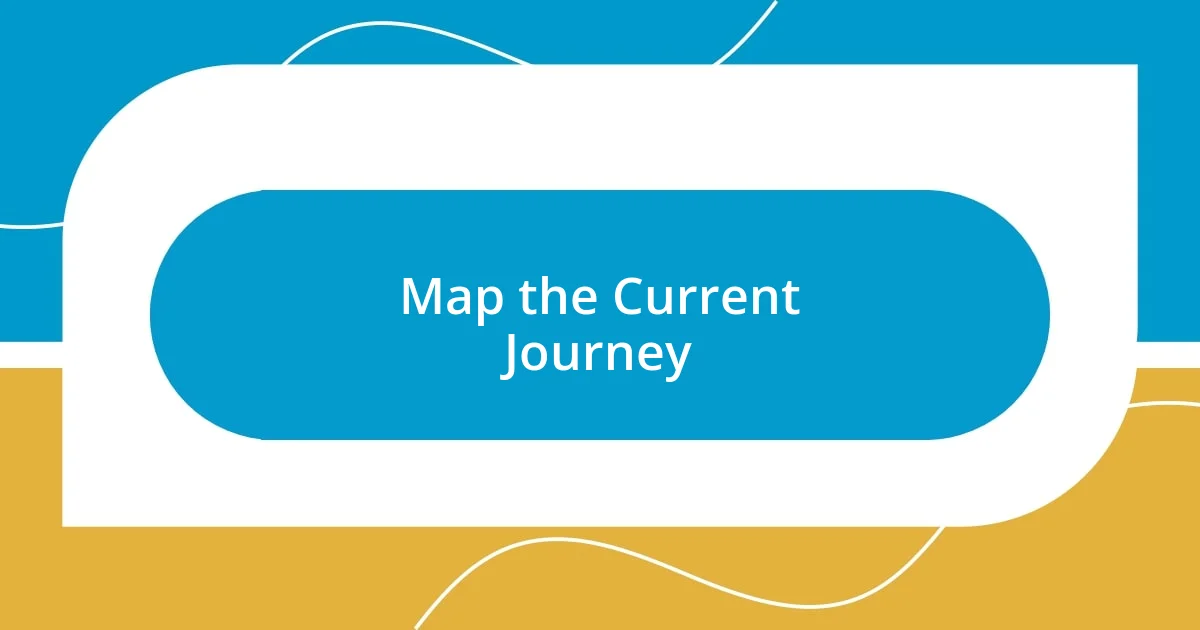
Map the Current Journey
Mapping the current journey is a crucial step that I’ve found makes a significant difference in understanding user experiences. It’s not just about tracing steps; it’s about visualizing the connections users make as they interact with a product. In my experience, carefully charting user touchpoints allowed our team to spot friction and moments of delight we hadn’t considered before. I truly remember a session where we penned this journey out on a whiteboard. As we went through each stage, the collective “ahas” from the team felt electrifying. We began to see the experience not just as a series of interactions, but as a story unfolding in real time.
To create an effective map of the current journey, you can consider these elements:
- Touchpoints: Identify every interaction a user has with your product, from first discovery to post-purchase support.
- User Emotions: Capture the feelings users experience at each touchpoint, whether it’s confusion, satisfaction, or frustration.
- Pain Points: Highlight specific areas where users struggle or feel lost, giving you insights for improvement.
- Opportunities for Engagement: Look for moments where additional value could be added, enhancing user satisfaction.
- Success Metrics: Determine what success looks like for each stage of the journey, aligning these with user and business goals.
By systematically mapping these aspects, I’ve seen teams create user-centered designs that not only meet needs but also foster genuine connections with users. Wouldn’t it be fascinating to see how your audience feels at every stage of their journey?
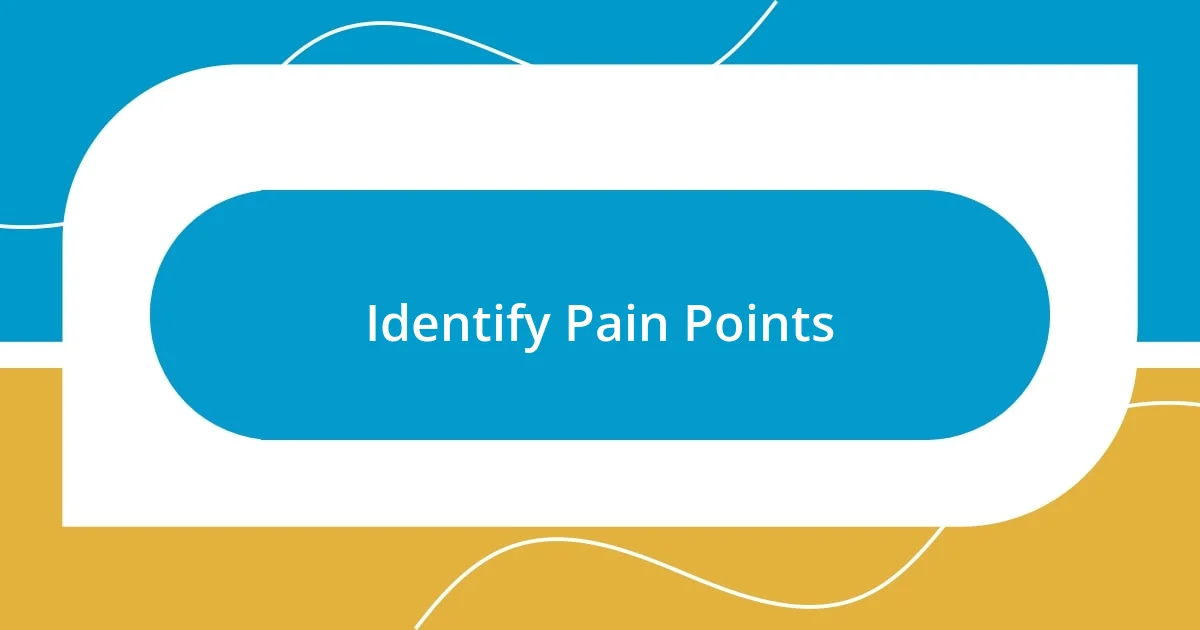
Identify Pain Points
Identifying pain points in the user journey is where the magic begins. I vividly recall a project where we conducted user interviews specifically to uncover frustrations. One user described feeling overwhelmed by a cluttered interface, which illuminated a critical area needing design improvement. It became clear that recognizing these stumbling blocks was vital to enhancing the overall experience. Have you ever wished someone would just listen to your struggles? That’s exactly what we aimed to do.
Once we pinpointed these pain points, it was about diving deeper into the “why” behind each frustration. For instance, I once worked on a digital platform where users were constantly dropping off during the checkout process. Investigating further revealed that many found the payment options confusing. By simplifying that step, we not only reduced dropout rates but increased user satisfaction. What’s more gratifying than solving a problem someone didn’t even know how to articulate?
Moreover, I believe empathy plays a key role in addressing these pain points. While working on another project, we created a feedback loop that encouraged ongoing user input. A young parent shared how she struggled to find time to navigate our app—her honesty prompted us to streamline onboarding. It was a poignant reminder that behind every frustration lies a real person with real needs. Have you ever stopped to consider the emotions driving your users’ experiences? Understanding these perspectives can turn pain points into powerful design opportunities.
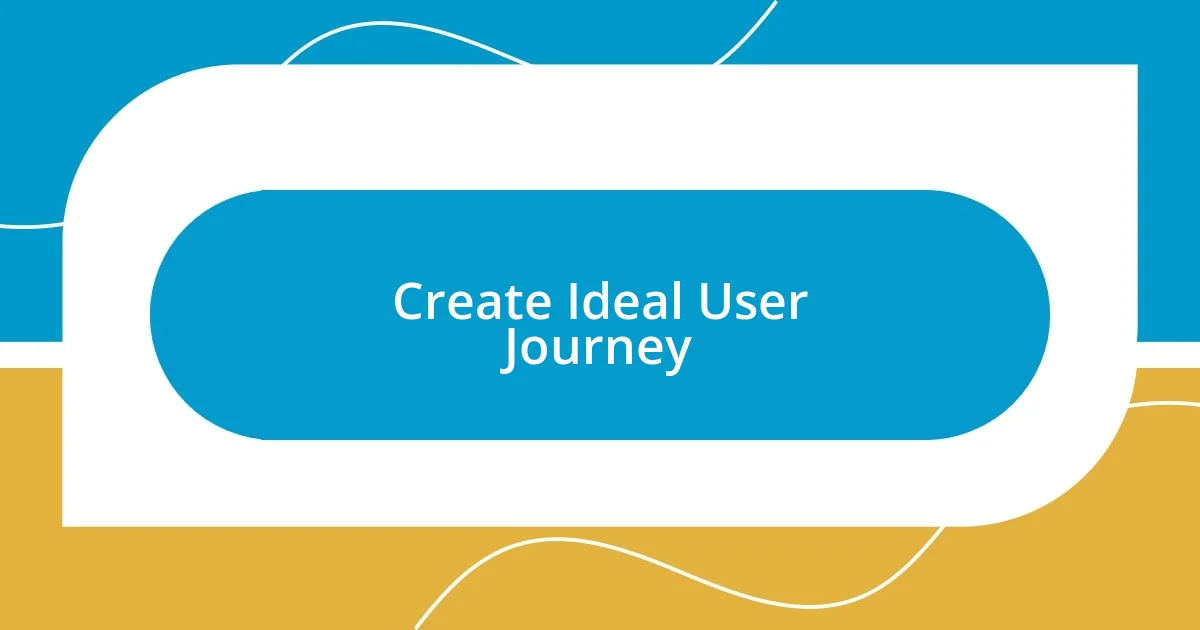
Create Ideal User Journey
Creating an ideal user journey comes down to deeply understanding users’ needs and desires. I remember a project where we decided to host a workshop with actual users. Sitting in a room with them, I was struck by how their stories illuminated unexpected pathways we hadn’t considered. Listening to their experiences made it crystal clear that designing with empathy is essential. Have you ever truly listened to someone while they shared their experience with a product? It’s one of the best ways to unlock insights for your design.
A strategic approach to integrating feedback into the user journey can be transformative. I once had the opportunity to implement user testing at various stages of a project, and what I found was surprising. Users would express a clear preference for certain features, which allowed us to pivot our design focus. It wasn’t merely about what we thought was important; it was about prioritizing what resonated with users. When was the last time you made a design decision based on real user feedback?
To truly create an ideal experience, it’s crucial to be proactive in iterating on the journey. In a previous project, after launching a minimal viable product, we invited users to share their thoughts regularly. Their input became a goldmine, helping us refine the features that mattered most. I felt a sense of accomplishment each time we acted on their suggestions, transforming challenges into opportunities. How often do we underestimate the value of ongoing dialogue with users? It’s essential for fostering trust and ensuring that our designs continually evolve to meet user expectations.
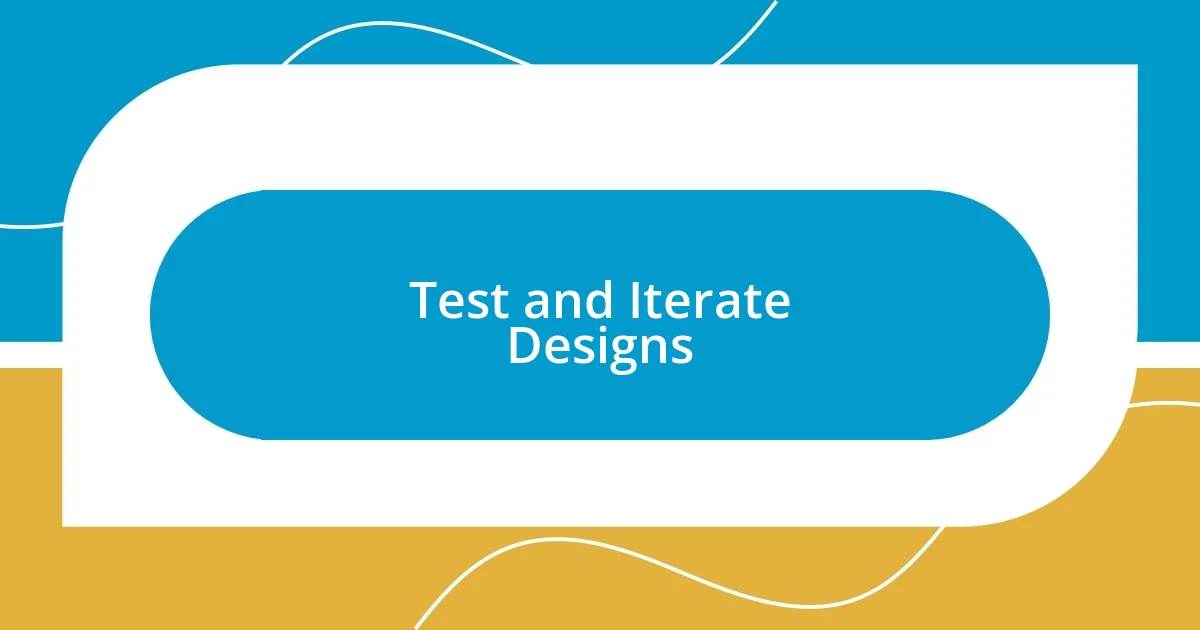
Test and Iterate Designs
Testing and iterating on designs is a crucial step that shouldn’t be overlooked. I recall a time when we introduced A/B testing for a feature that I was convinced would be a hit. To my surprise, the version I thought users would love ended up performing poorly. This taught me that assumptions can lead us astray; using data to inform decisions was a game changer in our design process. Have you ever felt certain about something only to discover that reality disagrees?
Once we established a routine of testing, the iterative process became exhilarating. Each round of feedback felt like solving a puzzle—every user comment offered a piece that helped us get closer to the final picture. One user once shared how a button was too small for their fingers, prompting us to rethink its size completely. Adjusting these seemingly minor details often led to significant improvements. I can’t help but wonder, how many small tweaks have you made that led to big wins in your projects?
Moreover, embracing failures as learning opportunities was essential in our journey. I remember launching a feature that didn’t resonate with users, sparking a wave of critiques in our feedback sessions. Instead of feeling disheartened, we took this as a springboard for refinement. Seeing how these discussions pushed our designs in new, unexpected directions was enlightening. Have you allowed setbacks to reshape your approach? Every misstep can illuminate a path to greater understanding—an opportunity for growth rather than a reason for defeat.
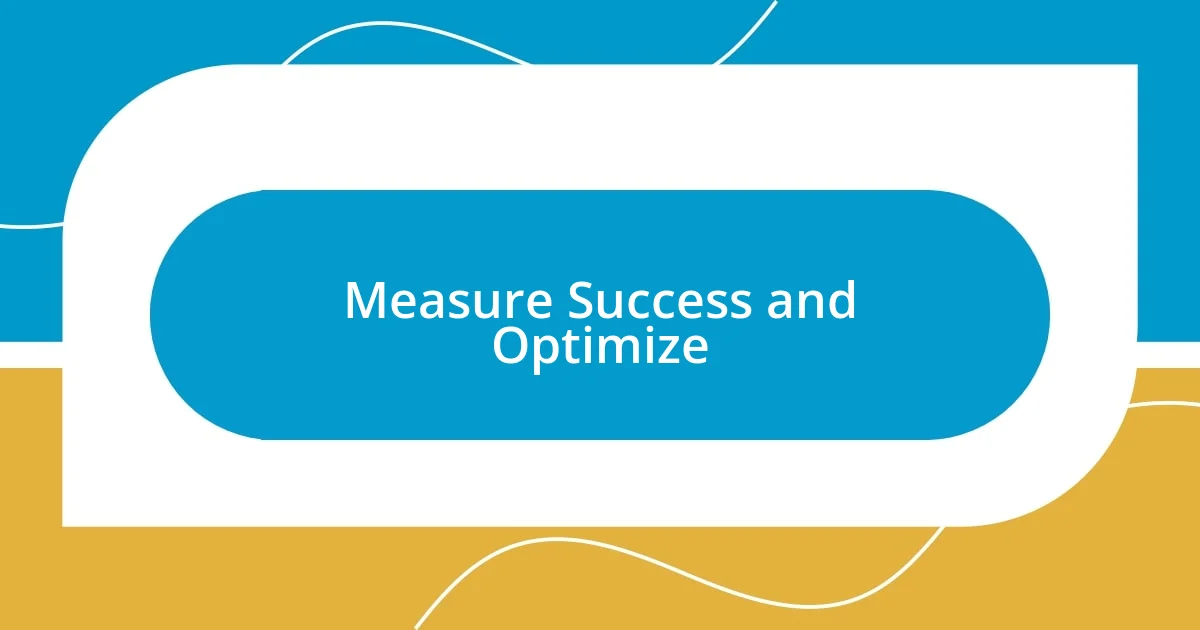
Measure Success and Optimize
It’s one thing to design a user journey, but measuring its success is where the magic happens. I often rely on analytics tools to gather data on user interaction—things like drop-off rates and time spent on pages. Once, I analyzed a user flow and noticed that a significant chunk of users was abandoning their cart at checkout. This revelation prompted a redesign. Have you ever uncovered a hidden friction point that transformed your design strategy?
Once I implemented changes based on those insights, the difference was palpable. Tracking user behavior post-launch provided a sense of clarity. I remember a project where we increased conversions by adjusting the navigation menu based on user feedback. Seeing those numbers rise was not only rewarding; it reaffirmed the power of data-driven decisions. Isn’t it exhilarating to witness direct results from your efforts?
However, measuring success goes beyond just numbers. I find it crucial to gather qualitative data too. After a feature launch, I like to have follow-up interviews with users. I once spoke with a user who shared how a small adjustment in messaging made them feel more valued. Their words highlighted the emotional connection our design fostered, reminding me that success is not purely statistics but also how users feel about their experience. How does your design make users feel?












